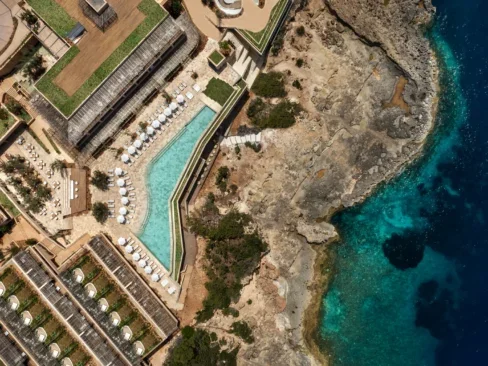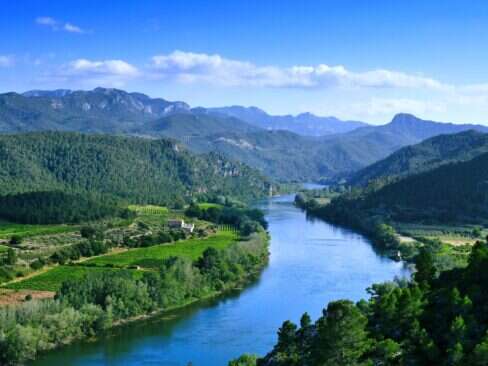In the ever-changing world of wellness, where new technologies, terms and trends appear to pop up every five minutes, sometimes it is best to take it back to the natural source. The powers and benefits of thermal waters have been known since the Romans and were a strong reason why many settled in the towns across Spain – with many of these same traditional thermal pools still being used today.
Thermal waters, as opposed to hot springs, are known for their high mineral content as well as their naturally occurring high temperatures, and soaking in them is known as balneotherapy – as opposed to hydrotherapy, which is just bathing in plain old tap water. Beyond simply being a place to soak and relax, historically, balneotherapy has been used to ease symptoms of conditions like rheumatoid arthritis, osteoarthritis and psoriasis. Further research has also suggested it can improve the body’s immune and hormone systems, leading to anti-inflammatory, pain relieving and antioxidant effects, which can help inflammatory conditions such as eczema and rosacea.
Spain’s various natural thermal pools found in its different regions will produce different mineral contents and ratios, varying in levels of calcium, silicates, sodium and magnesium salts, and sulfur compounds – to name a few. These different concentrations will mean different thermal pools will offer different therapeutic benefits; for example, waters high in iron content have been known to help with anemia or weight loss, while sulfurous waters have been known to improve skin conditions.
In a country pocketed with spots to sample the local thermal waters, we have selected our picks of the five most traditional thermal pools in Spain – so you can get back to relaxing.
[See also: The Best Wellness Retreats in Spain]
Ourense, Galicia

Any place that carries the nickname of ‘the City of Water’ seems like the apt choice to begin with. Romans first settled on this part of the southeast of Galicia in the northwest of the country almost 2,000 years ago and were largely attracted to the area because of Ourense’s pockets of thermal springs, the same pools that still see tourists flocking to the region today. In addition to the three rivers that cross through Ourense – Miño, the main river that divides the city, Barbaña and Loña – thermal waters also run over half a mile deep underground, at a flow of between three to four million liters a day. It’s no wonder, then, that Ourense became one of the founding cities of The European Historic Thermal Towns Association, and was certified a Cultural Route by the Council of Europe in 2010.
While the city boasts several spots to dip and enjoy its famous waters, they are mostly split into two main districts; As Burgas, the ancient Roman bathing site in the historic center; and the Miño Thermal Promenade, which features several thermal pools along a 1,500-ft stretch of the river. Visitors to the area can save themselves the stress of choosing which pool to dip their toes in, as the city runs a Thermal Train service that runs along the river bank and stops at each of the baths in the area, costing the same as a regular city bus ticket.
Balneario de Panticosa, Pyrenees

It is said the Romans, during the times of Tiberius, discovered the waters of Panticosa, in Valle del Tena in the Aragon Pyrenees. Most tourists who come to this town may be there for the first-class ski resort, but Panticosa still boasts legions of old luxury hotels, promenades and casinos – it was once the holiday destination of choice for Spanish royalty. While there remain a handful of spas and thermal centers in the town, the Panticosa Spa remains celebrated today, winning Wallpaper Magazine and Interior Design Magazine Best Spa Awards respectively – and it is clear to understand why. The complex architectural exterior plays, in the designer’s own words, into the ‘watery’ shape of its surroundings, and beyond being eye-catching, the complex houses hot pools, both interior and exterior, saunas, Turkish and ice baths. In short, if the mineral-rich, 127ºF temperature waters don’t relax you, the spa’s restorative and calming atmosphere most certainly will.
Arnedillo Hot Springs, La Rioja
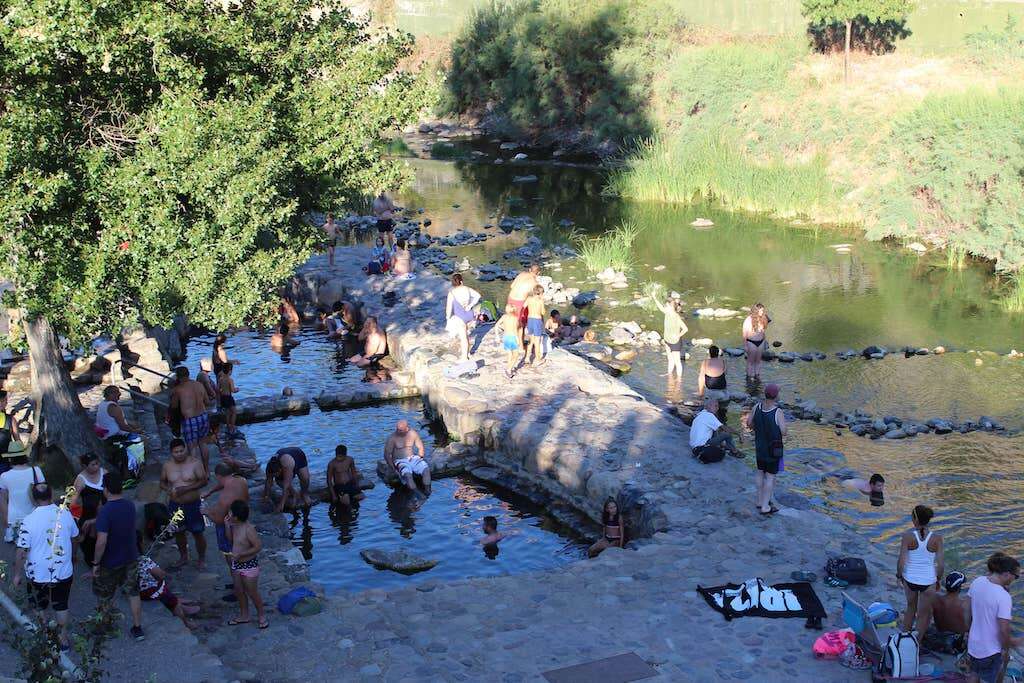
In a region world-renowned for its wine, it may be surprising that La Rioja’s waters have captured our attention. In keeping with traditional thermal pools, the valleys of the rivers of Cidacos and Alhama are perhaps the most natural and understated of those listed in Spain. The rivers are rich in hot springs and thermal waters, and the area has been recognized as a Unesco Biosphere Reserve. From the village of Arnedillo, visitors can walk along the stretch of the River Cidacos and find over a 1,500-ft stretch of thermal baths, each hand-carved into the stone of the river bed.
Against a backdrop of mountains, forests and vineyards, visitors can dip into the several pools. Since each pool ranges in temperature from 100ºF to 118ºF, you benefit from the sensation of the varying water temperature as they move through the pools. As the pools are a designated public space, and therefore free to enter. Expect legions of local families, each prepared with picnic baskets, robes and plastic cups of wine.
For those who prefer the scenery – and facilities – of a traditional spa, Hotel Spa Balneario in Arnedillo also has an outdoor hot springs pool, in addition to a wave pool and several therapeutic and beauty treatment options, including traditional mud masks.
[See also: The Best Eco-Friendly Hotels in Spain]
Vall de Boí, Catalonia
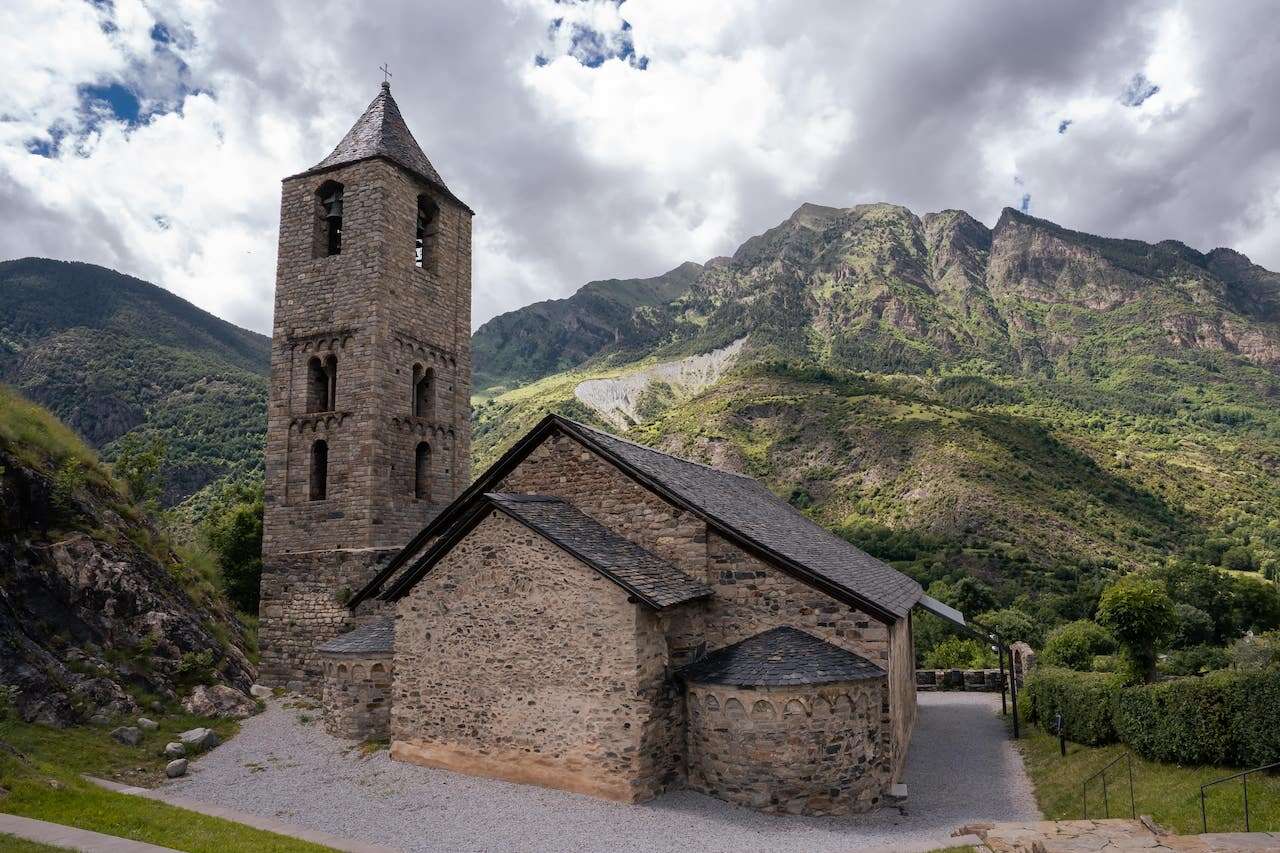
On the Catalonian side of the Pyrenees, Clades de Boi is embedded in the forests of the Vall de Boí, lying 4,800 ft above sea level. The river, the Noguera de Tor, is high in concentration of pure oxygen and is mainly chlorinated, sulfurous, sulfated and carbonated, and provides almost 40 hot spring sites. With water temperatures ranging from 39ºF to 115ºF, the resort holds a world record as the spa with the greatest variety of thermal waters.
The thermal resort focuses heavily on the therapeutic properties of balneotherapy, claiming the waters can aid with rheumatisms, respiratory affections, circulatory system, urinary system, digestive system and dermatological affections. Caldes de Boí has a team of onsite medical staff who supervise the treatment programs and offer consultations for personalized treatments. On-site, two hotels offer a comfy bed to doze off to after relaxing in the spa and the restaurant Manantial which serves a seasonal and regional menu to ensure a truly indulgent day out.
Termas Pallarés Spa Resort, Aragón
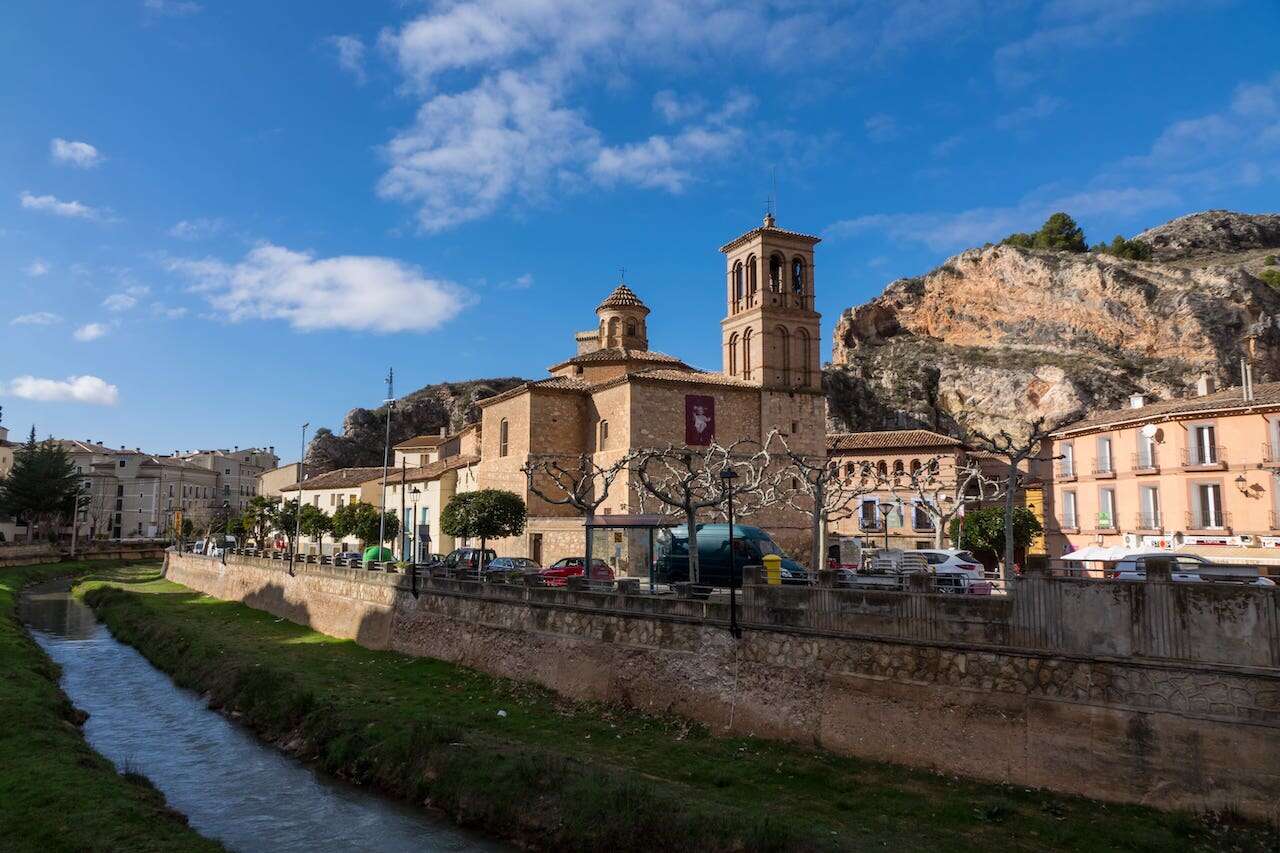
The thermal waters in the spa town of Alhama de Aragón, which lies in the province of Zaragoza and about a two-hour drive west of Madrid, have been utilized since Roman times. Modern by comparison, the Termas Pallarés Spa facility has sat in the heart of the town since 1863. The spa town sits close to a large thermal lake, the only one of its kind in Spain, where the consistent temperature of 93ºC makes it ideal for bathing all year round. The Hotel Balneario Alhama de Aragón which is connected to the spa, includes a Roman and Moorish bathhouse, and the Aqualhama circuit of contrasts, varying pools of different temperatures.







